Animal sanctuaries; the last resort and safe haven for so many species around the world. I want to find an animal sanctuary near me. Where do I find a “good” one?
This post may contain affiliate links, which means I may earn a commission if you click a link and make a purchase. As an Amazon Associate, I earn from qualifying purchases.
The term ‘sanctuary’ can be used without any regulation. This can lead to the support of wrongful practice and ultimately, animal misfortune.
Table of Contents
How to find an animal sanctuary near me, that is a “true” sanctuary.
That is the real question if you want to support positive animal tourism.
A “Good” or “True” sanctuary has:
- Incredible healing and peaceful conditions
- Great sources of education, and
- Promotes awareness and good practice
How To Find An Animal Sanctuary Near Me
There are two main platforms for finding Animal Sanctuaries or Shelters online. Whether it is farm animals, horses, black bears or rescued wildlife you are looking for, you can find them here:
ACCREDITED ANIMAL SANCTUARY (ALL COUNTRIES)
1. Global Federation of Animal Sanctuaries (GFAS)
The above-mentioned links to the Global Federation of Animal Sanctuaries (GFAS) website. Here, you will find all animal sanctuaries that are either Verified or Accredited by the GFAS. It is the best variety and number of all available online accredited animal sanctuaries, and you can search by:
- “near me” or by your country of interest
- animal or shelter type
- sanctuaries options (volunteering opportunities, tours, adoptions or internships)
ETHICAL ANIMAL SANCTUARY (ALL COUNTRIES)
2. World Animal Sanctuary Protection (WASP)
The Wasp has an Ethical Animal Sanctuary Near Me List (or Overseas).
- All animal sanctuaries either recommended as ethical
- Search country of interest
- Search on Map
FARM ANIMAL SANCTUARY (ALL COUNTRIES)
3. Farm Animal Sanctuary Near Me List (or Overseas)
The above mentioned is a link to Vegan.com
- Rescue animals from the farming industry (cows, chickens, pigs, etc.)
- List of US states and International Sanctuaries
Can you visit an Animal Sanctuary?
Each sanctuary is different and has its own operational preference. However, in many cases, visitors are welcome and encouraged.
Why? Money and awareness.
There is usually a small charge to visit a sanctuary. In many cases, there is also a charge to help or volunteer. It costs money to run a sanctuary, pay full-time staff, food, etc.
Many sanctuaries have dedicated “visitation times”. This allows a controlled exposure of animals to humans and also limits the animal/human interaction. Check the sanctuaries website (most have a phone number and email address) about visitation times or specific information.
Which Is The Best Animal Sanctuary Near Me?
This will come down to personal preference.
There are a few ways of looking at this too, by asking best for whom? The visitor, the volunteers, the animals themselves?
Sanctuaries that have been accredited or verified by the GFAS are usually operating a certain ethical and operational standard. This means that the animal’s lives, rights, and food are looked after. You can feel comfortable contributing (by way of entrance fee/donation) that your money is going to good use.
Note: There are many wildlife sanctuaries, conservation centres and wildlife rescue centres operating in ethical ways. Not all of them are “verified” or accredited by the GFAS.
To learn about the level of care, events, or ways to donate to these organizations you will have to check their website home page. Or read visitor’s reviews.
Popular Animal Sanctuaries In The USA
Southwest Wildlife Conservation Center in Scottsdale, Arizona
- By appointment – runs 2 hour long tours
- Has a wide range of animals (including large cats and black bears)
- Run different events (such as “Edible Plants of the desert” tours)
- Has volunteering and donation opportunities
The Wild Animal Sanctuary in Keenesburg, Colorado
- Open all days (except Christmas, NYC, Independence Day)
- Has a wide range of animals (induing large cats (lions/tigers) & Black Bears, Wolves)
- Largest wild animal sanctuary in the world
- An elevated walkway allows visitors to walk over the animals
- Allow 4-6 hours to do the whole walk
- Has volunteering and donation opportunities
Are Sanctuaries Good?
‘Good’ is a relative word. It’s difficult to categorize ALL sanctuaries under the umbrella of good or bad.
If you’re looking to participate in animal tourism, apart from seeing animals in the wild, visiting sanctuaries is one of the best ways you can do it.
There are many different venues that call themselves “wildlife sanctuaries” that may, or may not, be abiding by agreed upon ethical practices.
The job of us, as consumers, is to find and support “true sanctuaries”.
What Is A True Sanctuary?
‘”A sanctuary is a facility that provides lifetime care for animals that have been abused, injured, abandoned, or otherwise in need”
GFAS, Global Federation of Animal Sanctuaries
If an animal is in some kind of compound or captivity for any other reason than the above mentioned, it is not a “true sanctuary” (it could be a kind of zoo).
Once you understand the history and ethics behind zoos, it’s really hard to rationalize supporting them at all.

Morally problematic
“Perhaps the greatest difference between true captive wildlife sanctuaries and other captive wildlife facilities is that sanctuaries openly acknowledge that even the improved conditions they provide are still not enough to meet the needs of the animals in their care, making their captivity morally problematic.”
Captive Wildlife Sanctuaries
True sanctuaries do not claim to recreate animals’ natural habitats however, do their best to significantly improve the animals well being, relative to its prior state (before entering the sanctuary).
‘All I can do is make their prison as comfortable as possible’
Pat Derby (PAWS co-founder)
What Happens Inside Sanctuaries?
Sanctuaries are (as they suggest) a sanctuary or safe place for animals that have gone through some kind of traumatic life experience. A lot of animals come from the entertainment industry and have psychological damage from being influenced by humans (such as the palm oil industry).
In a true sanctuary, animals are:
- Treated with humility and respect
- Provided with food, shelter & both psychical and intellectual activity/stimulation
- Doctored to an improved level of health where possible
“The animals are dependent on human caretakers for all their basic needs, enrichment to alleviate boredom, and, particularly in the case of social animals held solitarily, contact with another living being. Humans manipulate natural activities such as breeding, and, in many cases, determine when an animal’s life will end.”
– Captive Wildlife Sanctuaries
Running costs are high
As many animals arrive at the sanctuary in a state of low physical or mental health. There are often high costs assisted with the rescue procedure.
As well as the maintenance of the venue itself, the food required, and the staff, some animals may require ongoing veterinary care, which can really add up.
When looking for an animal sanctuary near me, you want to keep in mind that there will be costs involved even though it is considered a non for profit.
Is There Interaction With Animals At Sanctuaries?
In order to offset the sanctuaries running costs, some venues run visitor tours.
These tours can provide information about the individual animals in their care, including details on their previous lives, rescue story, and the larger problems associated with breeding and keeping wild animals in captivity.
True captive wildlife sanctuaries do not allow the public to come into direct contact with the animals, primarily for reasons of safety but also to respect the autonomy of each individual.
It is difficult to have complete separation from humans. Even with non-contact tours, the animals are subjected to the sights, smells, and sounds of humans. Ultimately, the animals will be reliant on humans for their remaining years.
If you’re looking for an animal experience on your eco travel, be sure to check the animal sanctuary before you go.
What Makes A True Sanctuary Reputable?
There is a set of guidelines set by the GFAS as a minimum for sanctuaries to abide by in order to be considered “true” sanctuaries. These are also agreed upon by PETA (People for the Ethical Treatment of Animals):
- Replicating the natural habitat of the animal
- Provide physical and emotional enrichment
- Enough space for animals to move/roam freely
- No hands-on (photo) experience with animals for tourists [not included are long term/trained volunteers]
- Provided with a home for the remainder of their lives
- No breeding of animals
- Limited public visiting times
Sanctuary Accreditation
At present, the GFAS is recognized as the most credible accreditation organization globally.
While, in most cases, accreditation is not a legal requirement, it can have significant benefits for the sanctuary or wildlife conservation center itself. Accreditation reassures visitors that the venue practices under ethical values and animals are living in a high standard of care.
Ethical practices are becoming more and more mainstream in all industries including the fashion and cosmetic industry. As an eco-conscious traveler or enthusiast, it is good practice to support established ethical guidelines.
How To Start A Sanctuary Accreditation Process
In short, the GFAS accreditation process is as follows:
- A sanctuary prepares the documents required, submits to GFAS, and pays a fee
- A committee, which “has one or more veterinarians, a GFAS Board member and additional member(s), knowledgeable about the species and type of facility, review the documents
- A site visit(s) occur to the sanctuary as required (Almost all site visitors are volunteers, though sometimes a visit will be done by a GFAS staff person or consultant. Visits include staff interviews.
- All information is reviewed and a decision is made. If improvements are needed to achieve accreditation these are provided.
- To maintain accreditation, an annual fee and communication with the GFAS on major changes are required
- Every three years, follow-up site visits are done.
What if a Sanctuary is not Accredited?
Just because a sanctuary is not accredited by the GFAS, does not mean that they are not a “true sanctuary” practicing under high ethical standards.
“An organization not listed on our site may be up to our standards of care and operations but have not applied to become accredited.”
– GFAS
In fact, some sanctuaries have chosen not to apply for GFAS accreditation or even pulled out of their accreditation:
“The lack of transparency with which the GFAS operates, accredits and investigates complaints against accredited sanctuaries has many options out of pursuing accreditation”.
– Great Non Profits
When looking for a wildlife sanctuary near me, keep in mind that non accredited sanctuaries can still ethically run and a great place to visit.
Do your research
There is a seemingly endless number of sanctuaries around the globe. Each one is unique in its own right.
- Know what to look for before you go.
- Contact the sanctuary prior to going and ask about the sanctuary’s policy on the 7 guidelines provided by GFAS (mentioned above).
- Read online reviews of the venue
- Ask anyone if they’ve been before
Most memorable experience while working in an animal sanctuary
While each sanctuary is different, and everyone’s experience is different.
As a reference to the above-mentioned list, I spent a few weeks volunteering at a WASP suggested sanctuary in Bolivia.
I’d have to say that the conditions of the place did meet the expectation of the guidelines as per GFAS.
It was a great way to incorporate volunteering into eco travel.
Parque machia (inti Wara yassi)
Inti Wara Yassı predominately cares for monkeys that have been abused (physically and physiologically) in Bolivia. It is a rustic stay with about 20 volunteers and a small group of full-time staff.
The experience was definitely an eye-opener into the world of animal trauma (seeing the end results).
The sanctuary also cares for some bigger animals (a bear, and a few big cats). In order to volunteer with the big animals, you have to commit to a long term stay.
How to report a bad sanctuary
If you do get to a sanctuary and somethings not right. Report it!
Red flags include:
- Animals being mistreated
- Cages are small and dirty
- Obvious signs of in-house breeding
- Unethical animal souvenirs
You can report wrongdoing (anonymously if you want). If it is a GFAS accredited place, you should directly contact them.
If not, the Born Free Foundation has a great platform for reporting animal abuse or mistreatment.
This can even be for zoos or private facilities, such as tourist venues with riding animals. We saw a lot of sad-looking camels in Jordan.
Be aware, be conscious!
Being aware and conscious of the wildlife sanctuaries you choose to support will help ensure the best outcomes for our animal friends.
Like this little guy, MJ (from Inti Warra Yasi)
Respecting animals is an easy start. Like they do in Goa!
5 ways to help animals through wildlife sanctuaries
1. RESEARCH – Look for accredited venues. If you are going traveling and want to volunteer, follow the eco-travel actions, and be proactive in checking the conditions!
2. USE THE GUIDELINES – Use the accreditation guidelines to help decide if a place is acting the way it should.
3. ACT ACCORDINGLY – Be sure to follow the instructions set by the sanctuary (don’t run over to an animal and touch it, etc!)
4. REPORT WRONG DOING – You can always document and report wrong doing. This will help the animals and the sanctuary in the long run.
5. SUPPORT – Support true sanctuaries. Caring for animals can be expensive. Donate where possible or even better volunteer your time, it’s an experience you’ll never forget!
It’s never been easier to find an animal sanctuary near me, especially one that runs in a safe, ethical fashion. Take care and enjoy your interactions!
Any thoughts or personal experience?
We’d love to hear your thoughts or experiences with animal sanctuaries! Do you have any more tips on how to find a good animal sanctuary near me? Drop us a line below.
Like This Article? Pin it!
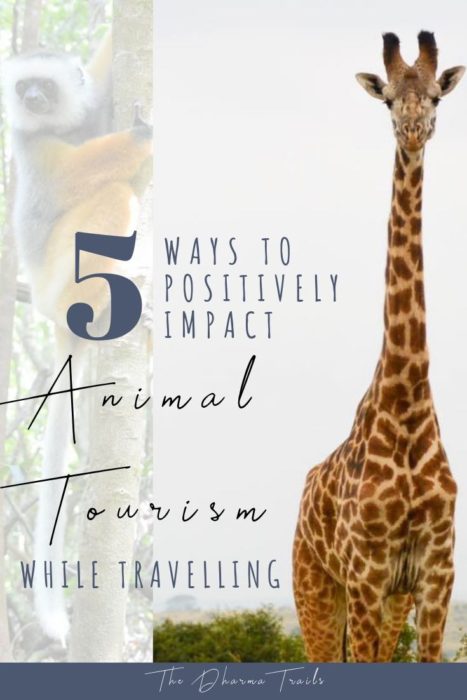
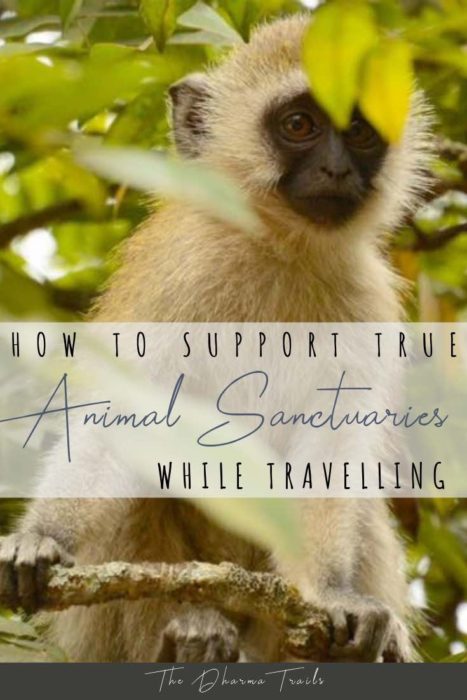
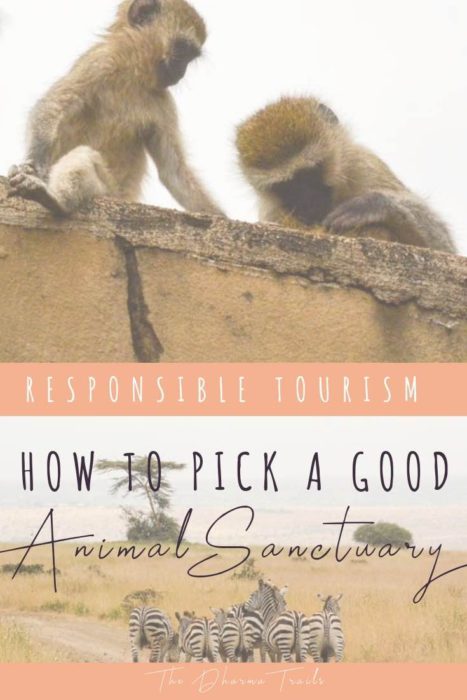
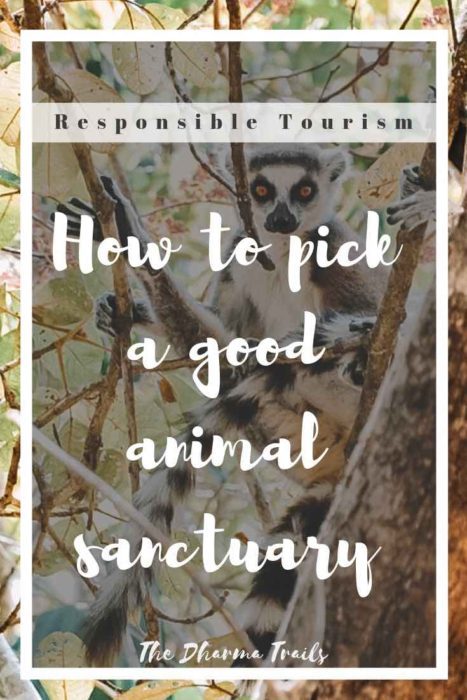
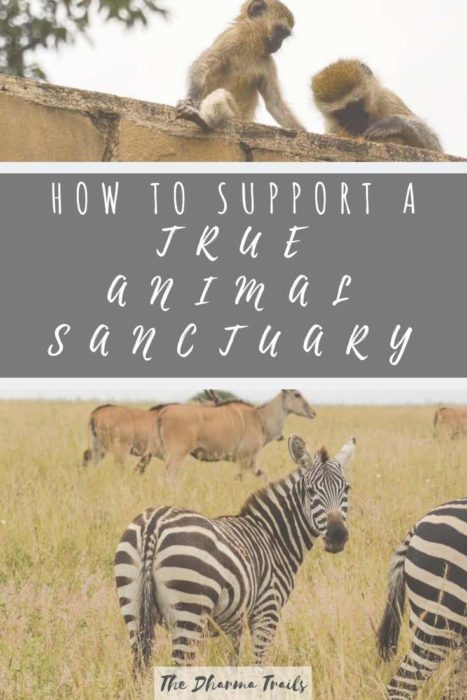
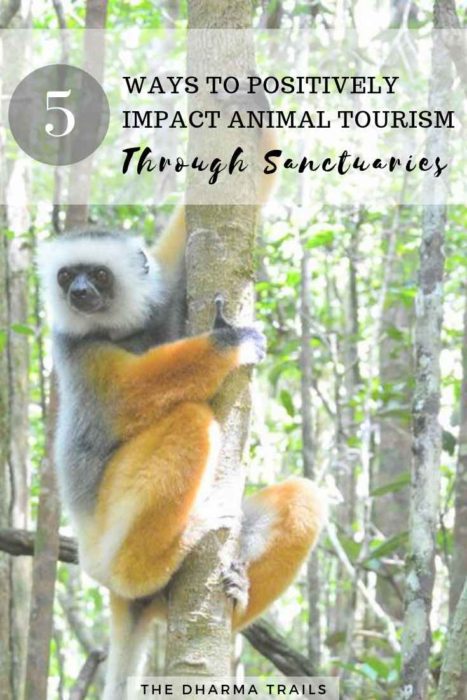





Nice article. There is a very handy farm sanctuary map online at forthevoiceless.org it’s worth a look.
Thanks William! Will check that out and add it in.
Cheers
I adopted a dog who was a street dog. She ran away. Found 2 yrs later. Ran away again. Needs a free life on a farm with other animals. Can you help?
Hi Carol, nice of you to adopt this dog (twice). We can’t help personally by taking the dog. But depending on where you are in the world there might be a suitable sanctuary for it to go.
Did you see any on our list that would work? You could always email them direct and ask if they are taking dogs…?